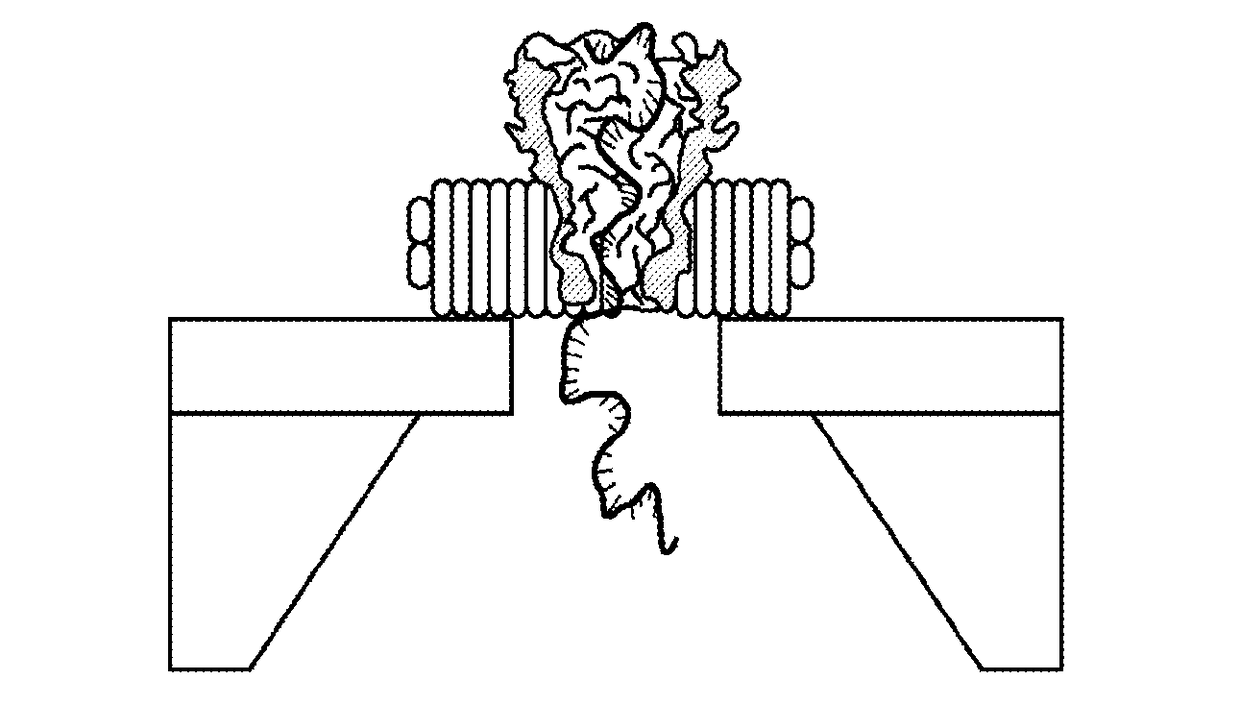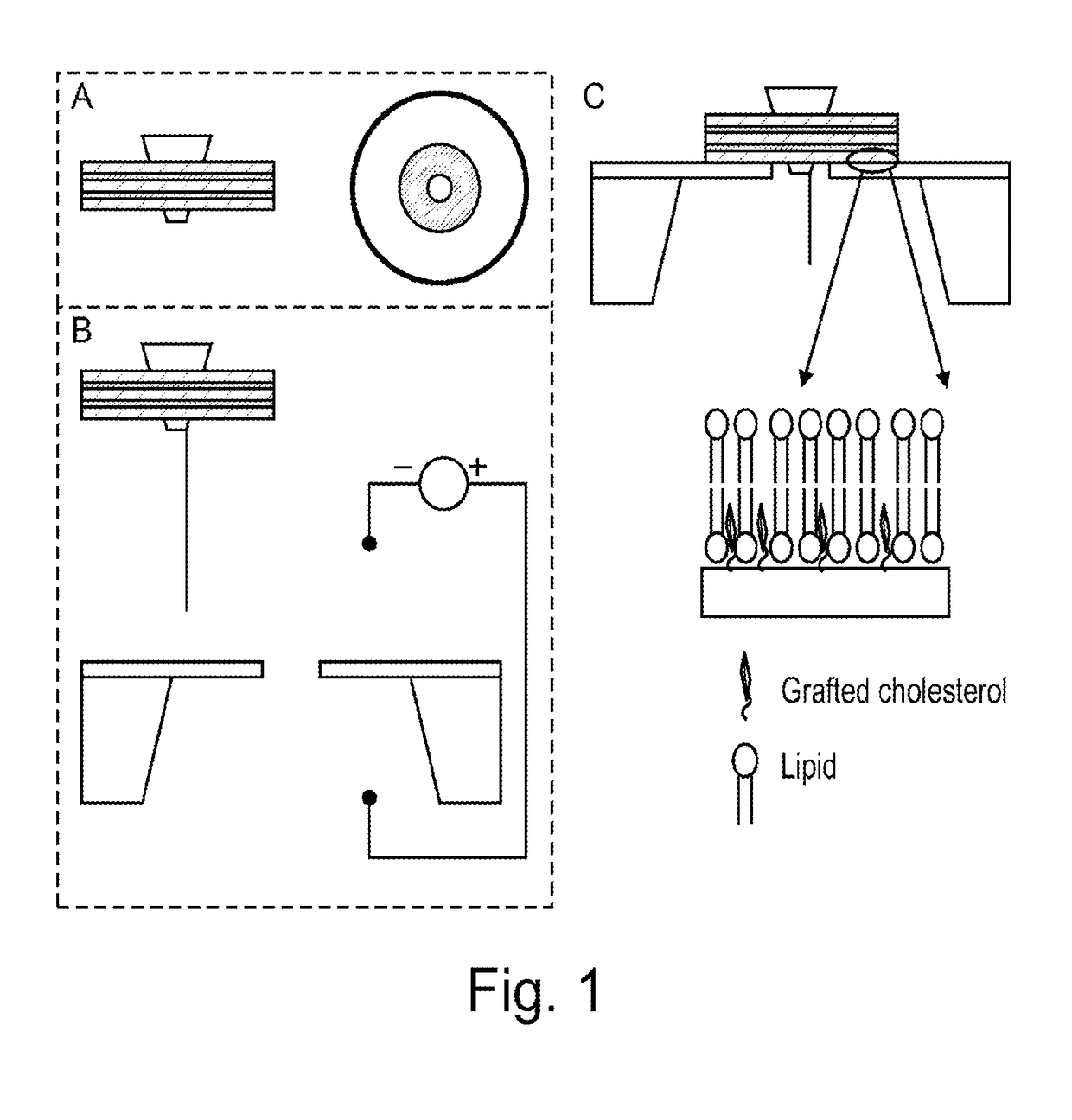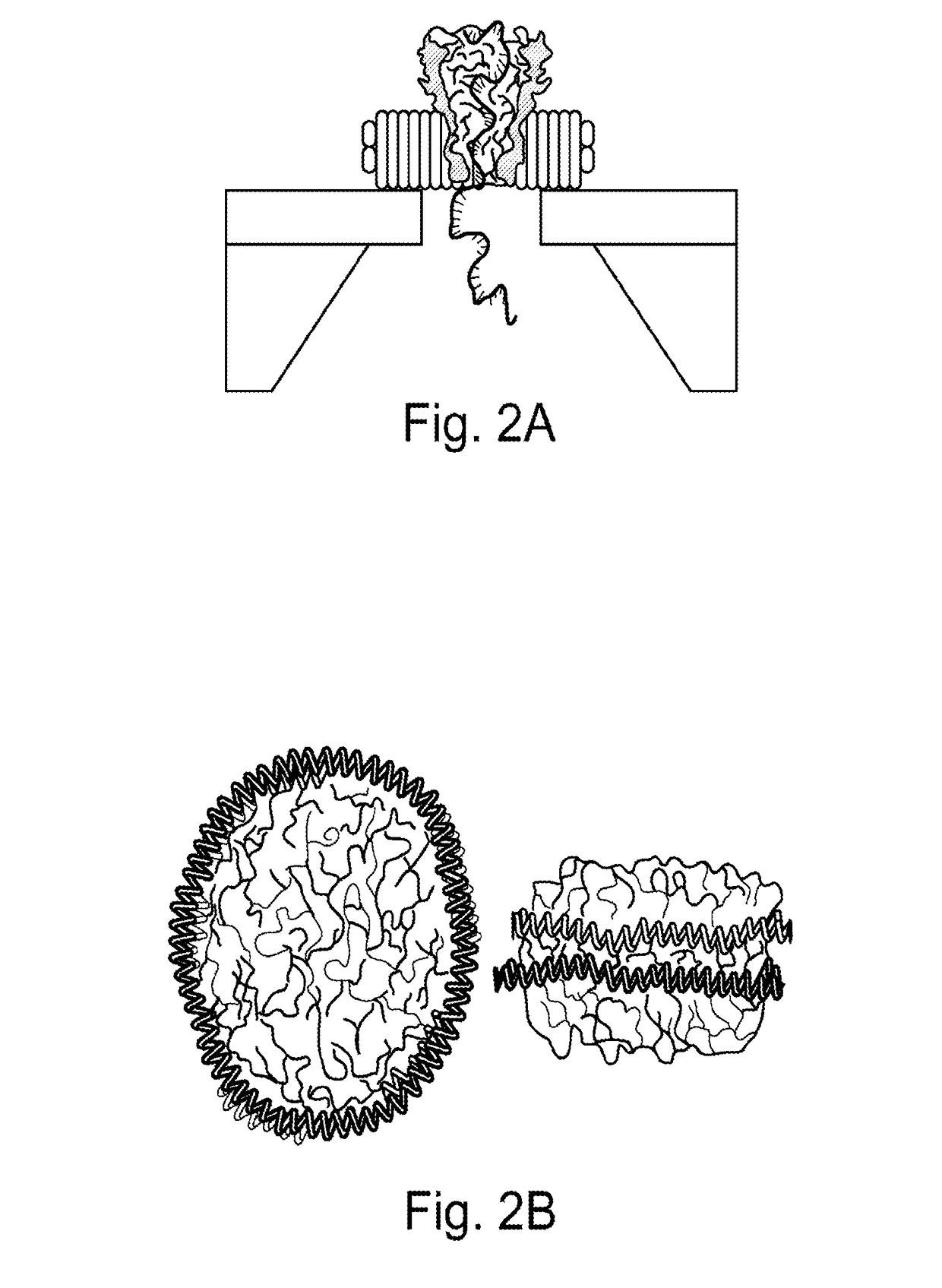Hybrid nanopore sensors
a nanopore sensor and hybrid technology, applied in the field of dna/rna sequencing, can solve the problems of inability to directly portability nanopore technology, difficulty in de novo assembly and haplotyping of human genomes obtained via sbs, and difficulty in achieving single molecule platforms to date, so as to reduce parallelization and data throughput, high speed and read length, and the fragility of existing platforms
- Summary
- Abstract
- Description
- Claims
- Application Information
AI Technical Summary
Benefits of technology
Problems solved by technology
Method used
Image
Examples
example i
[0117]The two major thrusts of the experimental design are to: (a) engineer, synthesize and purify the protein-nanodisc complex; and (b) assemble the complex on the solid state nanopore platform by electrophoretic forces. The electrophoretic driving force can be enhanced by attaching polyelectrolyte or DNA molecule on the disc or pore-forming protein. Additional surface treatment may be required to improve the insulation on the lipid disc-solid nanopore interface.
SPECIFIC AIM #1: Demonstrate Incorporation of MspA Nanopore into Lipid Nanodisc
[0118]Milestones: (a) Assemble and characterize blank lipid nanodisc; (b) Engineer MspA protein with His-tag for the purpose of separation and purification; (c) Incorporate MspA protein into lipid nanodisc, purify the product and characterize the morphology.
Synthesize Bio-Pore Incorporated Lipid Nanodisc
[0119]Blank lipid nanodiscs are synthesized by titration of lipid and MSP ratio. The experimental approach was reviewed above in connection with ...
example ii
[0129]This Example describes progress on specific aim #1 of Example I. More specifically, protocols were established to (a) assemble and characterize blank lipid nanodiscs with 10-13 nm diameter, and (b) incorporate MspA nanopore proteins into lipid nanodiscs and characterize the morphology of the complex.
[0130]Fast protein liquid chromatography (FPLC) was used to optimize nanodisc formation and MspA insertion as shown in FIG. 10. The bottom trace (black) is for nanodiscs only, showing a well-defined elution peak from an FPLC instrument. Adding MspA to the precursor mix destabilized the reaction and resulted in a second elution peak at higher molecular weight as shown by the middle trace (red). Behavior was similar to that of pure nanodisc synthesis in the presence of excess lipid. Although not necessarily intending to be limited by hypothesis, the surfactant required to stabilize the MspA protein in solution appears to be interacting with the nanodisc self-assembly process. By redu...
PUM
| Property | Measurement | Unit |
|---|---|---|
| aperture diameter | aaaaa | aaaaa |
| aperture diameter | aaaaa | aaaaa |
| diameter | aaaaa | aaaaa |
Abstract
Description
Claims
Application Information
 Login to View More
Login to View More - R&D
- Intellectual Property
- Life Sciences
- Materials
- Tech Scout
- Unparalleled Data Quality
- Higher Quality Content
- 60% Fewer Hallucinations
Browse by: Latest US Patents, China's latest patents, Technical Efficacy Thesaurus, Application Domain, Technology Topic, Popular Technical Reports.
© 2025 PatSnap. All rights reserved.Legal|Privacy policy|Modern Slavery Act Transparency Statement|Sitemap|About US| Contact US: help@patsnap.com



